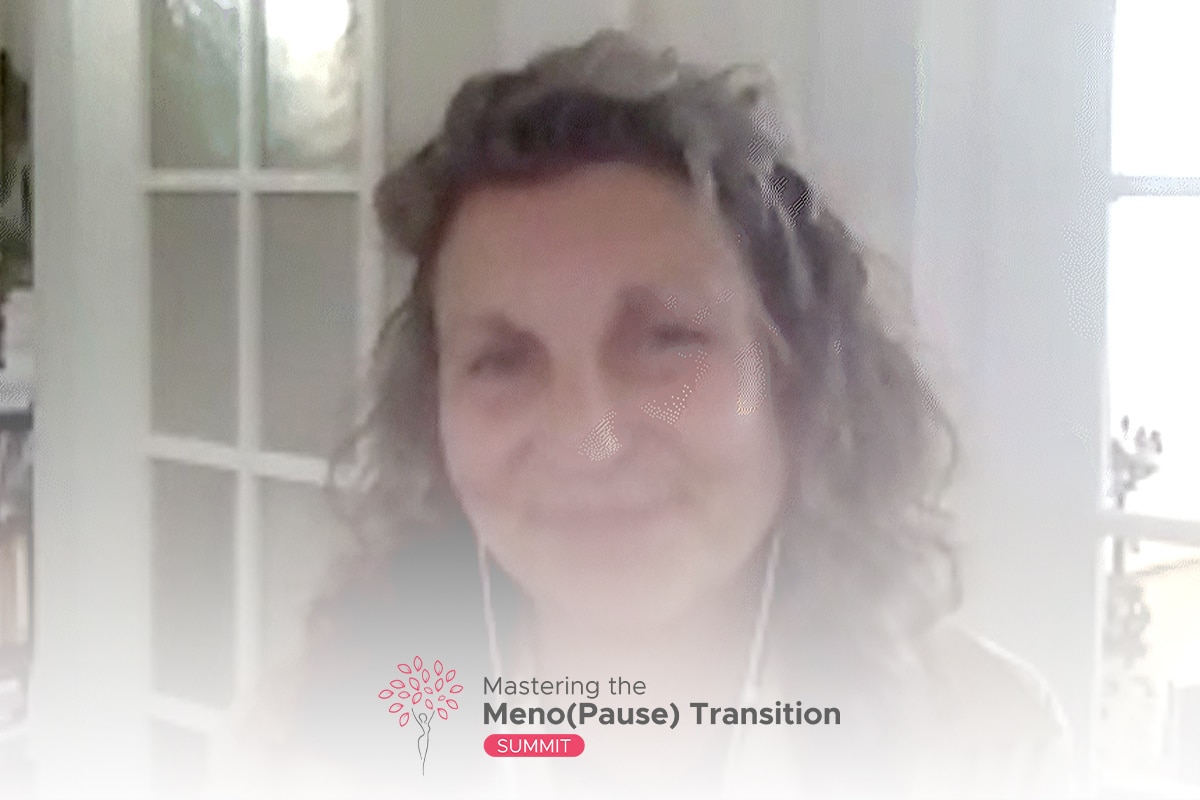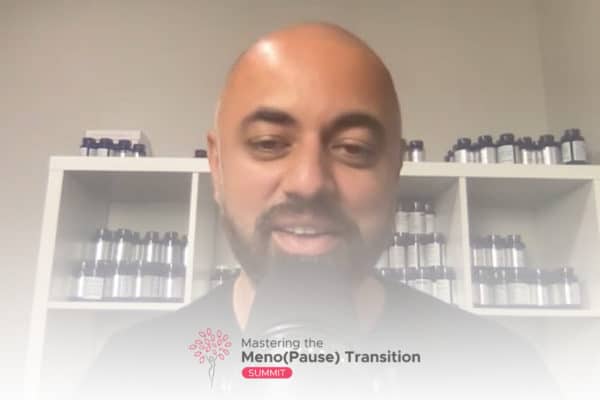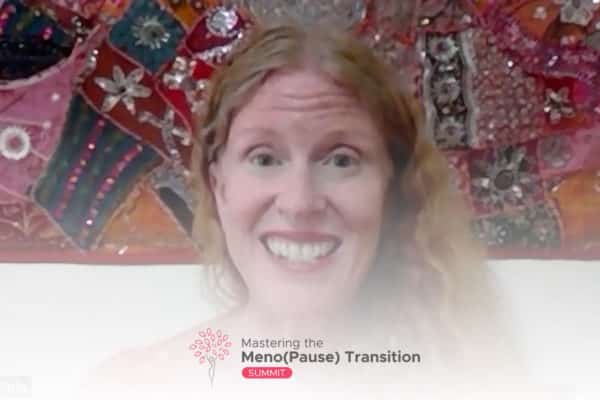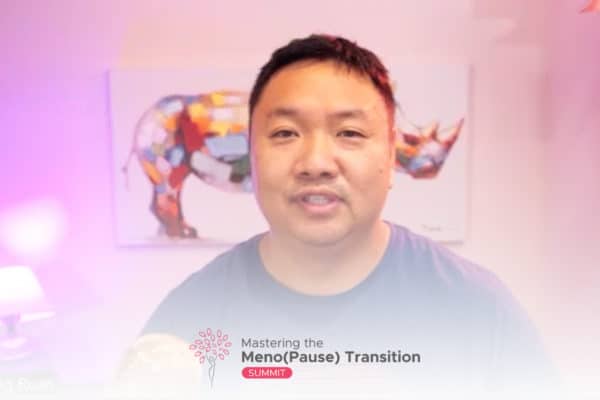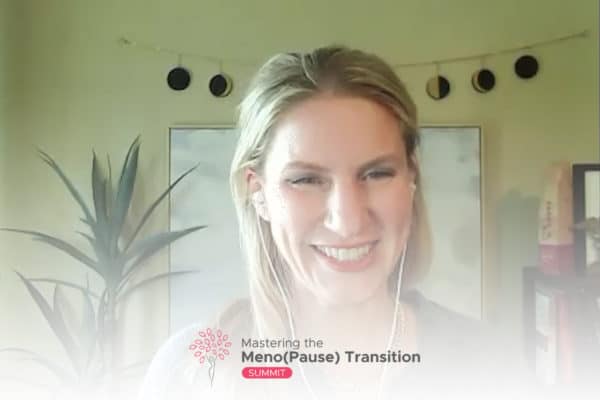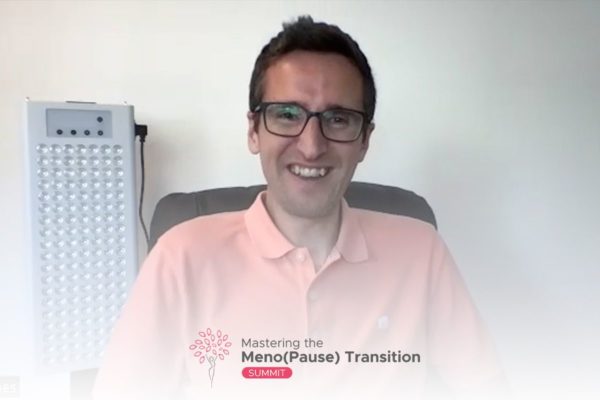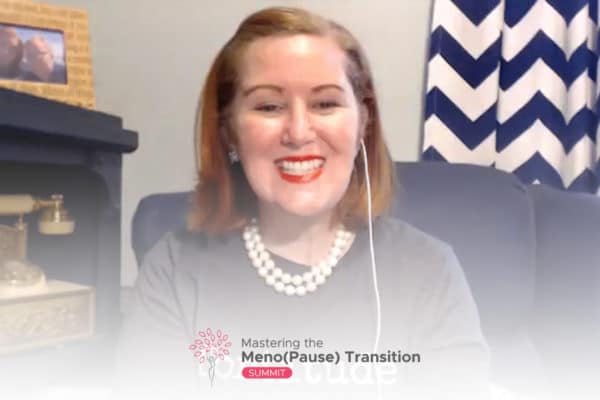Join the discussion below
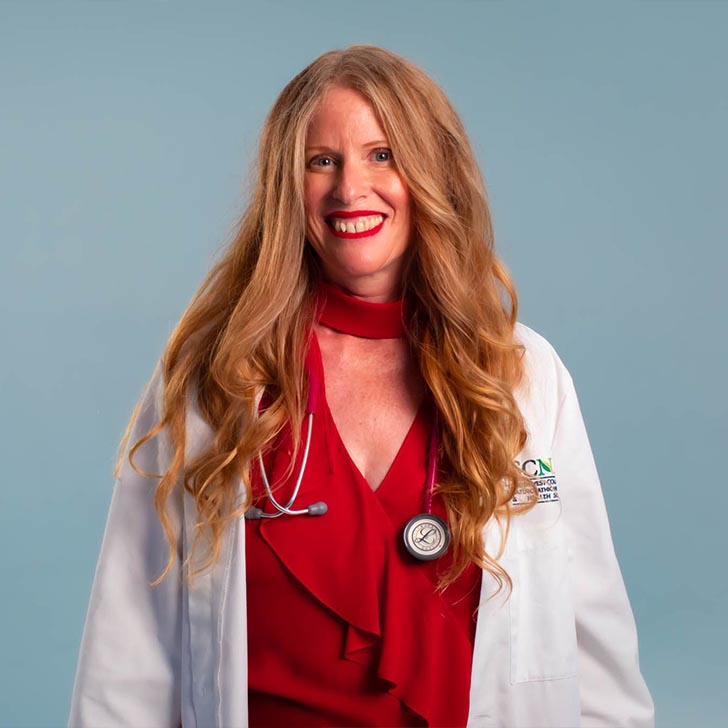
Dr. Sharon Stills, a licensed Naturopathic Medical Doctor with over two decades of dedicated service in transforming women’s health has been a guiding light for perimenopausal and menopausal women, empowering them to reinvent, explore, and rediscover their vitality and zest for life. Her pioneering RED Hot Sexy Meno(pause) Program encapsulates... Read More
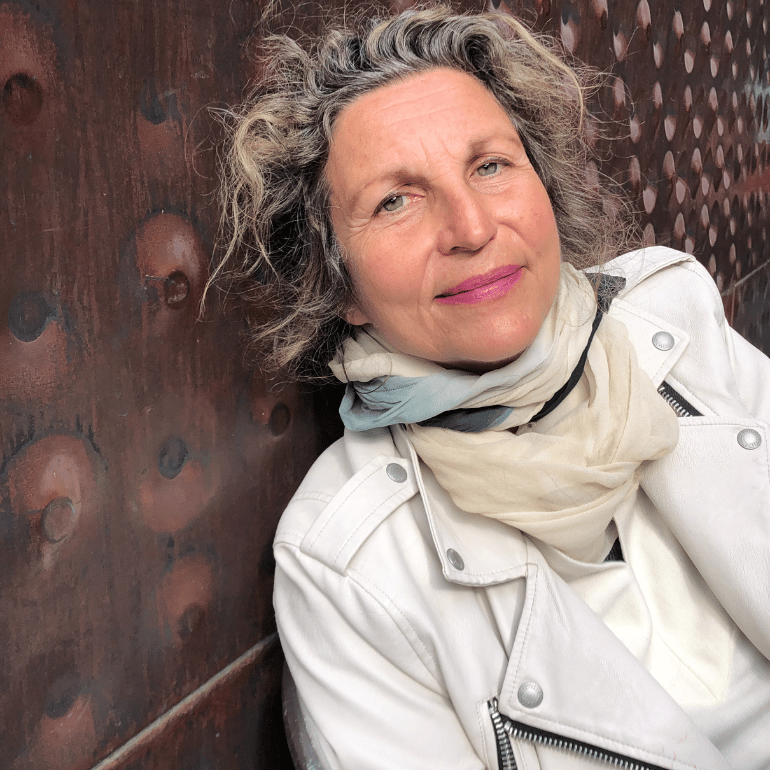
Gina Bria is an anthropologist and founder of the Hydration Foundation, recognized as a leading resource for hydration science and education. Named a Real World Scholar, she produced the first International Hydration Solution Summit and the TEDx talk: How to Grow Water: It’s not Only Blue: it’s Green. Bria is... Read More
- We are far more water than we thought
- Better hydration through multiple and fun loving paths
- Hydration as Wisdom
Related Topics
Dehydration, Hydration, Living Conditions, Menopause, Nature, Tissues, Water, Water Purification, Womens HealthDr. Sharon Stills
Hi, everyone. Welcome back to Mastering the MenoPause Transition Summit. I’m your host, Dr. Sharon Stills. I’m all giddy today ’cause I have one of my favorite people in the universe here to share with you. I promised you I would be getting you all the awesome people to give you all the awesome information you need, and today is gonna be just that. I have Gina Bria with me. She’s an anthropologist and founder of the Hydration Foundation. You know how obsessed I am with being hydrated. It’s one of the leading causes of disease issues, not being properly hydrated. And Gina’s a leading resource for hydration science and education. She was named a Real World Scholar. She produced the first international Hydration Solution Summit. I’m so excited, I can’t talk. And the TEDx Talk, “How to Grow Water: It’s Not Only Blue, It’s Green.” She is the co-author of “Quench: Your Five-Day Plan to Optimal Hydration,” which is now in seven languages. It’s recommended by “The New York Times,” and by Oprah and NPR. She is just amazing. I could go on and on, but I’m gonna bring her on, and we are gonna chat and get you all up to speed about what it means to be properly hydrated and to honor and acknowledge yourself as a water being. So welcome, Gina. I’m thrilled you’re here.
Gina Bria
Dr. Stills, I cannot wait to bring this out-of-this-world information on water and us as water beings and what that means for every life cycle that we occupy, so let’s get going.
Dr. Sharon Stills
Let’s do it. So we all think of water. We’ve all heard since we were little girls, drink eight ounces of water every day, that’s the way to get hydrated. And I have a feeling you’re gonna say something very different. So why don’t we just start with the basics of what is water? What do you view as water and hydration?
Gina Bria
Oh, great. Well, I’m coming to you from the perspective of an anthropologist. So that means we’re gonna have to do a little kind of background information, which I think is so important, to get to describe what water is and how it affects us at all of our life stages. And looking at women going, biologically going through their life cycle turns out to be an extremely valuable lens to layer on top of the topic of hydration. But I began this journey into hydration because I was looking at desert communities around the globe. And the shocking research that came out of that for me was discovering that people in the desert don’t hydrate with liquid. They hydrate with foods.
Dr. Sharon Stills
Hmm. Imagine that.
Gina Bria
So imagine that. So if you think cactus, or aloe, or even tubers under the ground, if we move our concept of water and where we get hydration just from liquid into its forms that nature provides for us, really, I’m just gonna do the shortcut statement, too, which is a high-plant diet is nature’s water bottle for you. If you’re eating a high-plant diet, you’re gonna be far better hydrated than the kind of tortured pathway that water has to travel to us to get to us today, which affects it in all sorts of ways as we all intuitively know.
Dr. Sharon Stills
Mm, mm.
Gina Bria
But yes. So I’m just-
Dr. Sharon Stills
So are you-
Gina Bria
Yeah, go ahead.
Dr. Sharon Stills
Saying that we, do we have to drink water? Is it a combination of things?
Gina Bria
I think a combination is very important because animals obviously are still drinking water. But if you watch them, for example, birds in migration, when they come into a water area, they are not gulping, gulping, gulping after flying all day. They take a few sips to activate the foods and the berries that they’ve eaten along the way. So we need a very different understanding of what water is. And what I’d love to help you get to is understanding that water is more than liquid. It’s more than vapor, liquid, and ice. There are amazing phases of water between liquid and ice that we’re just really starting to uncover in the science labs. And this is not a new kind of water. It is nature’s water that’s already been there all the time. It’s just that we haven’t learned to get to water as green the way we understand water as blue. And in addition to that, water packed inside of food is a different phase of water. And the most important thing it does in the phase once it’s locked inside of food is turn into an electrical conductor. That’s what we’re missing in our water.
Dr. Sharon Stills
Okay, so maybe you could unpack that a little.
Gina Bria
Yeah.
Dr. Sharon Stills
What is this phase? And what does that mean, water as an electrical conductor? And why is that important?
Gina Bria
Why it’s important is cause we need electricity to live. We’re just like our cell phones. You have to plug us in every day. That’s called hydration. But hydration is interfered with in our modern living conditions. So again, speaking as a anthropologist looking out at us as a culture and recognizing that our living conditions, our daily living conditions, are not a match to our biology.
Dr. Sharon Stills
Hmm.
Gina Bria
So there is disruption in our natural forms in us as biological beings occupying a culture which doesn’t support our natural systems unfurling the way they would through, for example, puberty, reproduction, and menopause. So now we can have that larger conversation, which is just so vital why so many women are having menopausal issues, pains, crisises, because your culture and your living conditions do not support your healthy passage through that state of life. Which by the way, is deeply spiritual.
Dr. Sharon Stills
Hmm, let’s talk about that.
Gina Bria
In every other culture, you hit menopause, you ascend to queendom. This is how it works.
Dr. Sharon Stills
Well, we’re all ascending here. That is what we are mastering. We are all ascending to queendom and thrones, and we are all about this. So I’d love to hear what you have learned from different cultures and how it is a spiritual passage.
Gina Bria
Right. Well, let’s complete the conversation on water first.
Dr. Sharon Stills
Okay.
Gina Bria
Because what will matter to occupying a culture that doesn’t support us in this stage of menopause is learning how deeply we are water beings. And knowing that this phase of water found in plants and in, for example, if you think of a cucumber, or you think of the juice dripping out of a pear, it’s slightly more silky and viscous than water from your tap, and that’s because it’s got that electrical charge to it. And that kind of water is also what is packed inside of our cells. And this is very important to know because most people don’t realize the water inside of you is not liquid. And yet, when you hear that conversation, “Oh, you’re just a bag of liquid,” you just feel like, well, I don’t slosh around when I walk. It doesn’t quite go with… The analogy doesn’t work for our personal experience.
But if you say to people, “You’re really a jelly bag. You’re actually tiny cells of Ziploc jelly,” then suddenly it lands. Oh, I can see how I’m a water being if I understand that water is thicker than just liquid, and that I’m not just throwing water down my water courses through my digestive tract. I’m actually osmosing water through my gel system, and that that is where we’re gonna find hydration operates in a completely different way than just getting wet or just getting our organs wet. They’re actually getting charged when we have exposure to the kind of water that nature is desperate to provide for us. But unfortunately, because we put water through pipes, and we bury it underground, and we pressurize it, and we unfortunately chemically wash it, every one of those doesn’t allow water to naturally shift into this jellylike state, which it seeks to do. That’s its end state for cleaning up and purifying us.
Dr. Sharon Stills
Mm. So… So many questions.
Gina Bria
Mm-hmm.
Dr. Sharon Stills
So we hear often we’re 70% water.
Gina Bria
Mm-hmm.
Dr. Sharon Stills
What do you say to that? ‘Cause I believe-
Gina Bria
Well, yeah. Working with… So I’m fortunate that I have an extraordinary life path right now, Dr. Stills. I can’t believe I’m even here. But I’m here because I got selected for this work, and now my job is to bring it to my tribe, right, to bring it back to my community and share. So I work with the world’s top water scientists. We’re looking at water in these new phases that we didn’t understand. And in that molecular quality about water, in other words, how water moves around itself and what it does, the new number for how much we’re actually water is 99%. That’s how many water molecules are in our system. It’s a huge volume. And I think it even helps land more for people when you say all your cells are filled with water. So now you get a sense of why that number could land so high. And then what I really try to help people get to is your cells make up your tissues. All of our tissues, whether it’s our lung tissues, our eye socket tissues, our brain tissue, our vascular tissue, our lymph tissue, all of this are water cells juggling next to each other.
Dr. Sharon Stills
Mm.
Gina Bria
And when that lands, all my tissue is water. I am… I’m related… I am a jellyfish with bones stuck in, so I can stomp around on this planet. That’s essentially what… That’s how it works.
Dr. Sharon Stills
That is such a good visualization. So what is the 1% that’s not water?
Gina Bria
Well, it’s the chemicals, the other material molecules that activate building and pro… I want you to understand water’s turning into things all the time. It’s turning into tissues. It’s turning into proteins. It’s the block by which all other things are built out of. And then, because it’s the mother block, it shepherds you to your next appointment, like you should be the liver cell. You’re gonna be doing lymph work over there. And so it’s the communication system as well as the building system. So we’re made of water and we require water to pass the coherent orchestrating signaling between the cells back and forth to each other. Now, if you are in a dehydrated state, which you must be, I’m sorry to inform you, if you live in our culture now, because we live deeply dehydrating environments. Even your cell phone and your computer is drawing electricity out of your system.
Dr. Sharon Stills
Mm-hmm.
Gina Bria
It’s dehydrating what water’s meant to do, which is to bring you electrical charge, as well as keep you moist and beautiful. You know, it does a lot of things for us. Yeah, so now we have a context to understand why menopause can be so detrimental and painful for us as a stage of life. Because at that point, we’re already in a slow descent of our hydrating tissues, and then we hit new hormonal requirements for our body and new processes or the reduction of other processes, and they’re all trying to do that in a dehydrated state. So you can almost hear the creaking. You could almost hear the creaking, sorry. You can almost hear the like unoiled joints going . It shows up now. So it’s our moment to say, wow, there’s an easy fix here, and that fix has to do with getting buoyancy back in our cells so that they can do the work they need to do for our stage of life now and ignite the orchestration of all of the new processes that can be eased onto online instead of just the takeout that we’re so… It’s not your fault. It’s not your biological fault. There’s not anything wrong with you. You’re living in a culture which has set you up to arrive here at this moment. So that’s an important thing to say.
Dr. Sharon Stills
So even the typical, even if you’re listening and you drink the eight glasses of water a day, you’re still, there’s work to be done is what I have learned from learning from you. So let’s talk about that. So we know that we’re water beings. We know that our culture does not support hydration. And most of us listening, if not everyone, are at some point clinically, subclinically dehydrated. So what can these ladies do to get moist and wet and juicy? How do we hydrate? What is the Gina Bria way of hydrating?
Gina Bria
Well, I wanna give you a set of strategies ’cause it turns out hydration comes from more than what we’ve been doing just trying to guzzle all that water. The first sad thing I have to say is that we’re guzzling bad water. That’s a problem because the more bad water you put into you, the more work your system has to do to draw out the toxins that are present there to try to convert this water into some electrical charge. Your body now is having electrical charge drawn out of it to try to cope with the bad water coming in. And by bad water, I mean straight up, tap water, the bottled waters we consume. So I wanna give an easy fix to you for that right away. So the water you are drinking in your water bottle likely has lost electric charge. It may not have lost all of it, so you’re creeping along, but it’s lost the optimal kind. So easy fix for your water bottle is to get a pinch of salt in that, great sea salt.
You’re not gonna go over any low-sodium diet. What you are gonna do is add electrical charge to your water. Your water molecules get that pinch of salt, and they start their own electrical system going. And pretty soon, that whole glass of water has charge in a way that now can be going into your system and your cells through electromagnetic forces far more easily. But don’t drink a naked glass of water anymore. Put salt in it, or put a squeeze of lemon, classic, classic strategy, or lime, or a capful of apple cider vinegar. Cut up some fruit and put it in there. Everything you do to that water is now talking to those water molecules. Remember, electrical signaling is going on. It’s not just a chemical reaction. So now you’ve had your water talk to other biology, and they are starting to have an electrical conversation, and you get to drink that electricity. How cool is that?
Dr. Sharon Stills
I love that, and I think it’s just so important as you’re doing it because the mind is so powerful to really be involved in that, not just mindlessly guzzling down a glass of water, but realizing you’re creating the electrical current and what it’s doing. I think your body will absorb it even better when you’re really involved and envisioning that and being grateful and thanking the water.
Gina Bria
Mm-hmm, I love that. Yes, thoughts do affect frequencies. Frequencies are part of how the electrical charge happens. So even singing to your… I love to always have a little glass and I do a little hum song before I take a sip, just ♪ Hmm hmm hmm hmm ♪ Nobody needs to know. It’s just me and my personal hum with my glass. And that allows us then to open another hydration strategy, which is an extraordinary one that we get to talk about now, which is sound healing, listening to music. We have the work of John Stuart Reid, who’s an acoustic physicist in England, who has videos and blood cell counts showing that music at certain frequencies does reshape the water cell and its ability to change the structure of blood cells, for example, or our liver cells, or our eye cells. So you can go find out about that or you can just realize that if a song is really moving you, that’s a song your body’s needing right now. And it’s actually shaping signaling in your water molecules. It’s reshaping the water molecule itself. So salt in your water or other foods, a stick of celery, listening to good music. Listening to music that makes you feel better makes you feel better. Well, that’s a hydration strategy. Getting out in the sun.
The sun is an extremely important hydrator. Who knew? We think of it the opposite. But because of the electromagnetic rays of the sun acts like a biological clock, it’s signaling going in, which tells the water molecules what time to do what, when to send signals, how to tell your microbiome it’s time to sleep. In 12 hours, you’re gonna be sleeping, people, you know? It’s incredible. Just the exposure, even if it’s very limited, it resets your clock every time you get out and the angle of those rays come in. We have fabulous work coming out of South Texas University showing that even your microbiome has molecular clocks. I know it’s dark in there. I know you think it’s dark in there. But actually, the minute you step out of the sun, your entire microbiome is like, oh, you’re off schedule five minutes. Get over here. You’re supposed to be digesting. Come on, come on. I mean, you’re just getting reorganized and reset. So exposure to sunlight, exposure to sound, exposure to salt or minerals. You can put mineral drops in your water as well. And then this whole fluid dynamic motion. Your entire system is a jellyfish. It’s meant to function. All your canals drain. All this beautiful canal under your arm, your lymph system, all of that works simply because you decided to put your arm in the air. You decided to take a walk. You decided to nod a lot during a Zoom meeting. All of those things, those are water-driving principles. And you know that if you push a tiny boat on a pond, it goes a long way. Well, those water-draining, water-distributing systems are at work in your body. And if you are not moving, you’re not hydrating. You’re not getting it to all those little Ziploc bags that need it. So I love the conversation about why it’s so much more than eight glasses a day.
Dr. Sharon Stills
Hmm. So just to recap that, we have not drinking naked water and we have a whole nother talk we’re gonna do on hydrogen water and the power of hydrogen water.
Gina Bria
Mm-hmm, yes indeed.
Dr. Sharon Stills
So we have not drinking naked water and simple fixes. I love that, the Himalayan salt, or the pink salt, or the Celtic Sea Salt. And then we have listening to music. And that is a new one to me. So just even if you’re not drinking, just listening to music. And I think you could do the listen to music and the movement. ‘Cause I know when I listen to music, I’ve gotta dance and move. So then we’ve got those covered. And then the sun, which we have definitely talked about in depth about the importance of morning sun and watching the sunset. And I like some afternoon sun. And so I think the sun is such a powerful healer. And we had a nice talk with Dr. Catherine Clinton about the sun. And I love that you’re bringing it up again for hydration because this is definitely expanding the idea of we just need to drink our water. So what do you wanna tell the ladies listening about how much water they should be drinking? And are there any, is it any fruit, any vegetable? What does their diet kind of look like? Which-
Gina Bria
Right. That’s so good. I really wanna get… I’m just gonna, my charger’s out. Let me make sure I’ve got us plugged in ’cause I don’t wanna lose this conversation. Yes, so it’s really important. Food, as I discovered in my desert research… There we are. We’re all safe.
Dr. Sharon Stills
Yes.
Gina Bria
Is… It is nature’s water bottle. And people are always… Like when we did published our book, “Quench,” in which we give 50 hydrating recipes, the publisher was like, “I need the top 10 hydrating foods.” And I’m like… Literally, I was backed into it. She goes, “Today, you will get me the 10 hydrating. I will have that list.” And I’m like, “It’s a fictive list.” Look, there isn’t any plant on the planet that doesn’t start at 85 and percent above water. So pick your percentages. You wanna have pineapple that’s I think 94% versus a watermelon, which is 80, 96? What I want you to know is every time you add a plant to your plate or to your day, you are increasing your hydration in a way that’s such a surprise because the foods act as these beautiful, the flesh of all those plants act as a kind of sponge release. So now you’re creating a timed hydration system.
Dr. Sharon Stills
Mm.
Gina Bria
So if you’re gonna eat pasta, and you put basil on there, and then you put pesto on top of the basil, right? And then you put, let’s see, I would cut up, okay, I’m gonna do a really crazy recipe right now, but I would cut up some beautiful, really juicy pears on top of that whole thing in little chunks with my onions, and suddenly, I have like a six-tiered hydration strategy just by having dinner, right?
Dr. Sharon Stills
Yeah.
Gina Bria
You can do this with smoothies, too, because smoothies are fantastic. I live for my smoothies. I make like beet, black raspberry with coconut milk and pink salt.
Dr. Sharon Stills
Mm.
Gina Bria
Go to town. Right?
Dr. Sharon Stills
Yeah. I’m in the desert right now, and it’s triple digits. And we just live on smoothies. It’s such a good way to get hydrated and get all the veggies and the fruits in there. And it’s a great way to get fruits and veggies into my granddaughter who tends to not wanna eat them, but in a smoothie, she just slurps them right up.
Gina Bria
It’s purple. What’s to know? You know? And then popsicles, also, or ice cubes. Again, if you do a smoothie into an ice cube and then the ice cube into your drink, you’re doing a whole nother level of strategy, which we’ve kinda forsaken with the idea that it all has to be liquid. So I think that why I wanna get to the conversation about women in menopause, though, is because menopause is a crossover threshold, and it is when dehydration shows up in a brand-new way. And if you know that hydration is a, your being is longing for that, it puts you in a category now of, oh, I can dance with this in a new way. Because now this involves, instead of fending off the problem, it involves swimming towards the solution or the buoyancy of I’m gonna bring all these hydration things towards myself and just watch what happens. It’s not a health task, another health task that we have to chip off our list, but a new buoyancy of being. And I’d love to go to the next part of this conversation, which is the spiritual value of hydration.
Dr. Sharon Stills
Let’s go. I’m ready.
Gina Bria
Now, yeah. We can talk about it in terms of… So now, again, I’m sitting in my anthropology chair and I wanna let women know that menopause around the world is considered the crossover category for women to come into their council slots. They are now the wise ones. And of course, we don’t feel wise in this culture. We feel like we’re a mess, but that’s only because we’re dehydrated.
Dr. Sharon Stills
There you go.
Gina Bria
Because the wisdom in water is available to us in ways that we don’t have to know rationally. But scientifically, I can tell you that even a 2% loss of hydration leads to cognitive disruption. And now, I’m really talking about just not being able to see your way clear to things, feeling anxious and disrupted, Anxiety is the first clue that you’re dehydrated. It’s a huge clue. And it’s your whole body is going, can we just stop everything for a minute and get a drink, or get an apple, or take a walk, get out? It’s like that. So why water is so connected to wisdom in all cultures all around the world… And by the way, every culture gives women a special access to water. Women are the water carriers, the water blessers, the water lineage. And we have no skills in our culture at this knowledge. And part of it is because we’re dehydrated and our brain doesn’t do the altered state that’s available to us. If we’re truly hydrated, we have new consciousness available to us, and it’s a communal consciousness. So getting well-hydrated means you get to occupy the council role as a woman now of, hey, of course you wanna talk to me ’cause I’m the wise water woman.
Dr. Sharon Stills
I love that.
Gina Bria
And it’s so easy and so graceful. And do you wanna dance afterwards?
Dr. Sharon Stills
I just had this vision of we need to host a water lineage retreat-
Gina Bria
Ah.
Dr. Sharon Stills
Where we can dance and sing and bless the water and bring back the water lineage to all these women listening because we are wise and we are powerful. And if we are feeling separated from it, it’s just a door we need to swim through-
Gina Bria
Mm-hmm, yeah.
Dr. Sharon Stills
To shift that and to step into what you’re speaking about.
Gina Bria
It’s quite extraordinary that we, as moderns, have been so severed from our wisdom traditions, our water traditions, our water skills. And by water skills, I mean knowing all the places water can be found, and all the reasons you would want to bathe your new grandchild, and all of the things we have forsaken. But the great thing about hydration is it holds the memory for us. Water holds it. If we just get ourselves buoyant again and ourselves fully buoyant and completely optimized with hydration, then we’re gonna find ourselves in new categories as well. And we have access to things we don’t have to know rationally because this… Actually, it is a very rational process, but because our brains are computers that work at, our entire body is a computing system that works at such high data exchange that we don’t need, the brain is like the slow, it’s the intersection where everything slows down and gets mangled.
Dr. Sharon Stills
Mind getting-
Gina Bria
Oh, my God.
Dr. Sharon Stills
Well, when I think about, I’ve always thought about water and how it heals so powerfully. I think about sitting on an airplane and they give you a hot towel.
Gina Bria
Mm.
Dr. Sharon Stills
And just that hot water on your face is enough to shift everything. Or going out in the rain and letting it cleanse you and letting it rain on you, or taking a dip in a hot, I mean, in a cold plunge.
Gina Bria
Mm-hmm, mm-hmm.
Dr. Sharon Stills
And having water heal. There’s so many different ways, baths, and contrast water, hot and cold water, and so many ways medicinally. I use water just on the body and just immersing in water. And I love that you bring to the conversation this movement and music and the reminder that… Every time I talk to you, I just feel like floating away. I’m like, hi, I’m a water being. Like, hi, I’m a jellyfish. I was just at the aquarium. I just saw the jellyfish.
Gina Bria
Love it.
Dr. Sharon Stills
I forgot to say, I am you and you are me. I’m gonna have to go back.
Gina Bria
The water and me greets the water in you.
Dr. Sharon Stills
Yeah.
Gina Bria
Well, you’re making me think about… So I wanna share a recipe, right? What recipe do I share? We’ve talked about putting chia seeds in liquids, in smoothies, because they are a desert seed that I discovered during my desert researchers that release high-volume gel. They’re quite extraordinary. Their electrical conductivity power is quite extraordinary. So this is a food in modern times to move into our dehydrating environments. So I’m not gonna say anymore about chia seeds ’cause today I wanna talk, I’m just dying to talk about honey.
Dr. Sharon Stills
Ooh, okay. But for the chia seeds, ’cause ever since the first time we talked, I prescribe chia seeds to every patient I see. So if someone wants the chia seed recipe-
Gina Bria
Yeah, I can do it in two seconds.
Dr. Sharon Stills
Okay.
Gina Bria
Which is a can of coconut milk, or the equal amount of almond, or oat, or whatever you like, five tablespoons of whole chia seed. And you’ll remember five ’cause you have five fingers on your hand. So now you know the recipe. It’s a can plus your hand.
Dr. Sharon Stills
Okay.
Gina Bria
Right? You mix it, mix it, mix it. You mix those in a bowl. You could dress it with a little salt if you want, a raspberry jam on top, you could drizzle maple syrup. You see where I’m going with this.
Dr. Sharon Stills
Okay.
Gina Bria
But you make this potent pudding, and this is a really excellent strategy for hydrating your body at night because the liquid isn’t there in quite the way we understand. And so you have all the whole night where you don’t have to get up and pee every time because the liquid is rushing through your system.
Dr. Sharon Stills
Yes.
Gina Bria
It’s a great strategy for the elderly. But it also is a time-release system for athletes. Super cool.
Dr. Sharon Stills
Perfect. Thank you.
Gina Bria
Now let’s talk about honey.
Dr. Sharon Stills
Honey. Okay.
Gina Bria
Okay. So I’m, what am I? 60, 65? I think I’m 65. I don’t remember because I was 19 twice one year. And you know, that… The crazy brain. And I have discovered that my honey facials have turned out to be a powerhouse of love, beauty, and engagement. And what I do with honey is I dip a spoon in, and then I take the honey off the spoon with my fingers and I draw it down my face. And I’m talking my neck. I’m drawing it under my eyes as deeply as I could get there, right under the eyelashes of your lower eye, across my forehead. It’s getting stickier and stickier and stickier. And this is very exciting because honey, as a humectant, is a powerful deliverer of hydration to your skin. And then you start tapping your skin because your fingers are sticky and your skin is sticky and it’s pulling away the dermis just a microgram, just enough for your face to release all this old toxin and waste through your lymph system.
Dr. Sharon Stills
Wow.
Gina Bria
And so you get this amazing drainage going on just at the same time you’re feeding your face all this hydration. And I get pretty serious with this, Dr. Stills. I actually slap my face. So I’m in there like knocking, given myself some huge slapping, slapping, slapping. It gets funny after a while. You’re just there slapping your face.
Dr. Sharon Stills
So any kind of honey?
Gina Bria
It’s raw.
Dr. Sharon Stills
Okay.
Gina Bria
You want raw, and I’ll tell you why in a second. But when you do this honey technique and you get it under your eyes, so you’re right up under the eyelashes under your eye, when you tap there gently, you are literally draining that whole pool of water right there. So this is a great strategy for getting bags under your eyes taken care of while you’re dealing with filling in all your other beautiful age-related and age-honored crevices that you have on your face. You’re doing this whole amazing relationship with the honey and your skin and your face, and then you’re doing, and your lymph system, your flow system, your dermis, and your eye sockets because your eyes could really use that gentle massage, and they perceive according to how much hydration they have. So this is wonderful. And the final thing about all this is honey carries a peculiar kind of microbiome itself. It’s the perfect match for protecting your skin. So now you’re feeding all the microbes on your skin along with all the other things you’re doing while you’re having a great time slapping your face around, right?
Dr. Sharon Stills
So how often are you doing this?
Gina Bria
Whenever I feel like it. I might go for a week where I don’t do it, or I might find that a morning and an afternoon. It’s a fun thing to do. It takes very little time.
Dr. Sharon Stills
Now I wanna get some honey after this.
Gina Bria
I know. So how are you gonna get this all off your face? And this is what cued me ’cause you were talking about the hot washcloth. So I take a washcloth and I lay it on the lid of a pan, or just a pan so that I’m not getting water on my counter. But I lay it in a long roll. And I only put boiling water from my teapot right on the center of it. So I still have the ends, they’re not too hot to touch. ‘Cause you know how that could get, right?
Dr. Sharon Stills
Yeah.
Gina Bria
It gets so hot. And I ring it out, and then I lay this hot, gorgeous watered, this beautiful washcloth, and I just pull off the rest of the honey. I just pull it off. And I always leave behind a tiny film. I don’t leave it behind. I wash it off. But what gets left behind is a beautiful protective microbiome right there on your skin that is gonna fight for you day and night until you go to the next round of whatever honey mask you might do.
Dr. Sharon Stills
So do you do this at bedtime and then sleep with that residual on? Or are you doing it-
Gina Bria
Yeah. And by residual, we’re talking about no hardly, you wouldn’t notice it. Although, you’re really pulling it off, but it’s gonna leave behind the micro-level microbiome that protects your skin. But yeah.
Dr. Sharon Stills
Okay, so real quick before we finish. So you take the organic raw honey.
Gina Bria
Right.
Dr. Sharon Stills
You put it all over your face.
Gina Bria
About a teaspoon. Then you tap, tap, tap, tap, and then you might even get into slapping, and get your neck. Oh, get your gorgeous. Get in there with some massage. You’re gonna love it to death. And then a hot, hot washcloth well-rung-out that you just wipe your face all down with that. And it’s so good for your eyes, and your skin, and your neck. And your face is just beaming afterwards.
Dr. Sharon Stills
I am so excited. Make sure you don’t burn yourself, ladies. But that sounds… I’m going to my cabinet as soon as we’re done.
Gina Bria
Yeah.
Dr. Sharon Stills
I really love me a facial. I’ve never done that. I love facials, but I’ve never done the honey and the tapping. That makes so much sense to just-
Gina Bria
Doesn’t it? Yeah.
Dr. Sharon Stills
Encourage lymphatic drainage, so.
Gina Bria
Mm-hmm, mm-hmm.
Dr. Sharon Stills
Oh, my goodness. You are always such a surprise, and a delight, and a joy, and you always just, you hydrate me. I feel hydrated, and buoyant, and bouncy, and I always learn something when I speak with you, so I-
Gina Bria
I feel the same. I get the energy. Our water’s exchanging electrical conduction, even through the Zoom screen. Who knew that that was possible? But yeah.
Dr. Sharon Stills
Exactly, exactly. The wonders of technology.
Gina Bria
Yes.
Dr. Sharon Stills
They feed you, but they also drain you, so it’s-
Gina Bria
Right.
Dr. Sharon Stills
To have a good relationship with them. So you have so much information. Where can the ladies learn more about you?
Gina Bria
Yes. Thank you for asking that. I have a nonprofit website called hydrationfoundation.org. And if you come and visit us there, there are lots of recipes. There’s discussions about the science behind all this. There’s new strategies for hydrating we’ve shared here on this. I’ve even put some music up there, hydrating music. I hope my team has got it up there. And if not, just you know what you need to listen to, right? Just beautiful, beautiful music will really help you. I’m glad we got that in.
Dr. Sharon Stills
Yes, I highly recommend. I go to the website and it’s just such a wealth of information. So I highly recommend going over there and check it out. I also, on my podcast, “The Science of Self Healing,” I had the honor of interviewing Gina. So we have an episode up as well. That was so fun to do. So I encourage you to go check out my podcast, “The Science of Self Healing with Dr. Sharon Stills,” and you can scroll down and find our episode. It was not so recent, but within the last, I think, six months, and you can give a listen to that to learn more about Gina’s work and hydration. But we definitely have some great take-homes for moving, and sun, and what to put in our water, and eating more veggies, and chia seeds, and honey on our face. So we’ve got a lot of great valuable take-home information. So thank you. Thank you so much for being here and for all the work you do in the world. It’s just so amazing. I learn so much from you. And I am such a hydration junkie, because I know after over 20 years of working with patients, if a patient is not hydrated, I’m not gonna get them better. And so, yes, we love our hormones and they help a lot, but we have to put them into hydrated bodies. So we’ll be back soon, and be well, and thanks for being here.
Downloads

